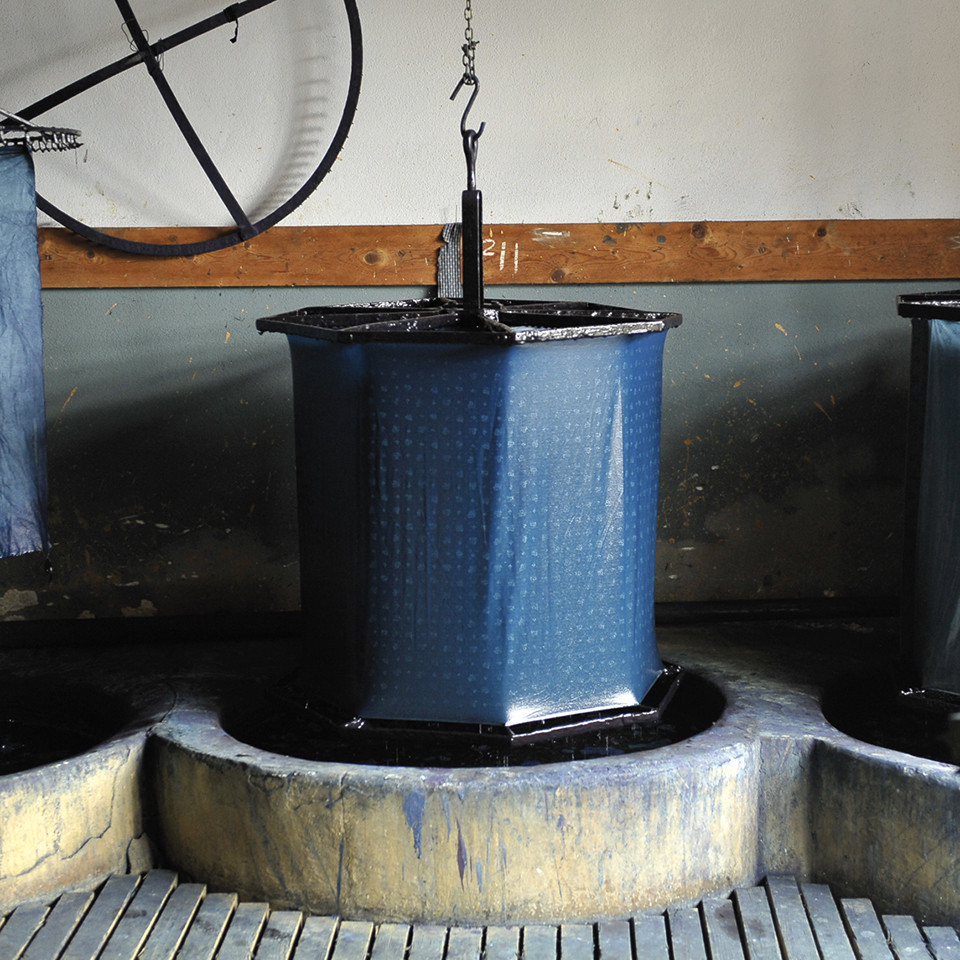Gansey sweaters, England
Although many jumpers are sold with the label “Gansey“, these British icons are only truly authentic if they are hand-knitted in one piece without seams. The result is a particularly robust and wind-proof sweater, characteristics which endeared them to sailors in the 18th century. According to the Heritage Crafts charity, whose president is Prince Charles, there are only between six and ten companies left who make the original Ganseys. One of them is Flamborough Marine on the east coast of England. In 1981, the company started making machine-knitted sweaters, but because they shared their premises with an antiques shop, customers started asking about the original version. There was a single lady in the region who could still knit these unique jumpers – and her skill has ensured that the Gansey heritage survives.
Artificial flowers, Germany
Chanel, the queen’s milliners and the costume designers of blockbusters like Titanic or the series Downton Abbey: the customers of artisans Heide and Gerald Steyer are a pretty influential set when it comes to style. The blooms that the couple lovingly make by hand in Wallroda, Saxony, are perfection frozen in time. But unfortunately, the skills needed to create them are drying up and few appear to be interested in keeping the craft alive. There is a simple reason for this: in west Germany, the apprenticeship to become an artificial flower maker was abolished in 1972. Those who learned the trade in the former GDR are now retired – or have long moved on to greener pastures. Despite the waning interest, the Steyers hope to find someone prepared to take over their business. If that sounds like a flourishing prospect, candidates are very welcome to visit the workshop and the museum to learn more about these delicate floral works of art.
Needle lace, France
Lace made with only a sewing needle and thread? It’s even more complicated than it sounds. A single square centimetre of this lace takes around seven hours to produce. The gossamer fabric, which comes from the small Norman town of Alençon, was protected by a state monopoly in 1655 and became vastly popular as a status symbol at courts throughout Europe. The “Queen of Laces” was also shown at the Great Exhibition in 1851 to great acclaim. Shortly after, though, the industrial evolution opened up the possibility of machine-made lace and needle lace went into a decline that was halted only at the very last second in 1976. The “Atelier national du Point d’Alençon” (National Workshop for Alençon Lace) was set up to preserve the tradition, and it not only produces lace but also teaches the skill. Currently, there are around ten people who can still make the lace, keeping this centuries-old tradition alive. The apprenticeship is as complex as the lace itself and takes between six and ten years.
Blue printing, Austria
In the 18th century, all the way from Germany to Hungary, blueprinting was a popular method of dyeing textiles. Today, one of the last blue printers in Europe can be found in the Burgenland region of Austria. The small company is called Koó and is run by Josef Koó, the third generation of his family to do so. He makes aprons, tablecloths, oven gloves and armchair upholstery with exactly the same techniques employed 100 years ago: using patterned wooden blocks, a special dye-resistant paste is applied to the white fabric, which is then dyed with indigo to create a blue background. Incidentally, the fabric is not blue immediately after the process; it takes exposure to the air to trigger a process of oxidisation which changes the colour from yellow to green and finally blue. There’s a German expression, “to experience a blue surprise”, which some etymologists believe has its roots in this craft. And if you own something that has been dyed with indigo, you may very well be in for a surprise as the colour depth changes constantly through wearing, washing and folding. It’s like they say at Koó: “If you live with the fabric, the fabric lives too.”
Coral carving, Italy
According to UNESCO, a “Living Human Treasure“ is a person who possesses to a high degree the knowledge and skills needed to carry out or pass on an intangible cultural heritage. In 2013, this title was awarded to Platimiro Fiorenza, Sicily’s last “Mastru Curaddaru” – a master craftsman who works the coral growing off the coast near the town of Trapani with techniques developed in the 16th century to produce exquisite chalices, crucifixes and jewellery such as necklaces and belts, which can be admired in museums all over the world. Fiorenza learned the craft from his father when he was six years old. He is 78 now and still can’t keep his hands off the red gold from the blue seas. Just last year, he decorated the iconic “Baguette” handbag as part of the “Hand in Hand” project initiated by the Italian fashion house Fendi to promote rare crafts.
















